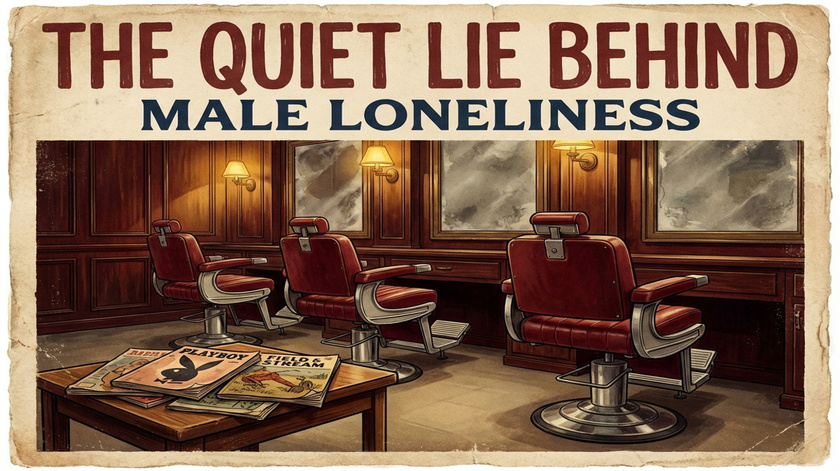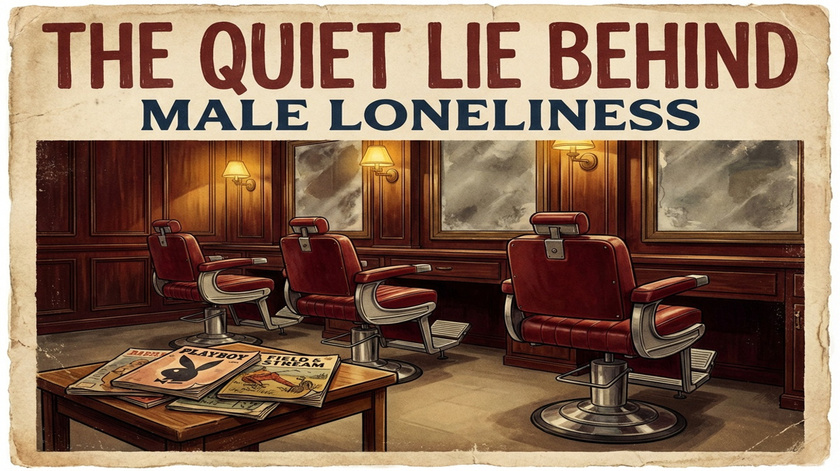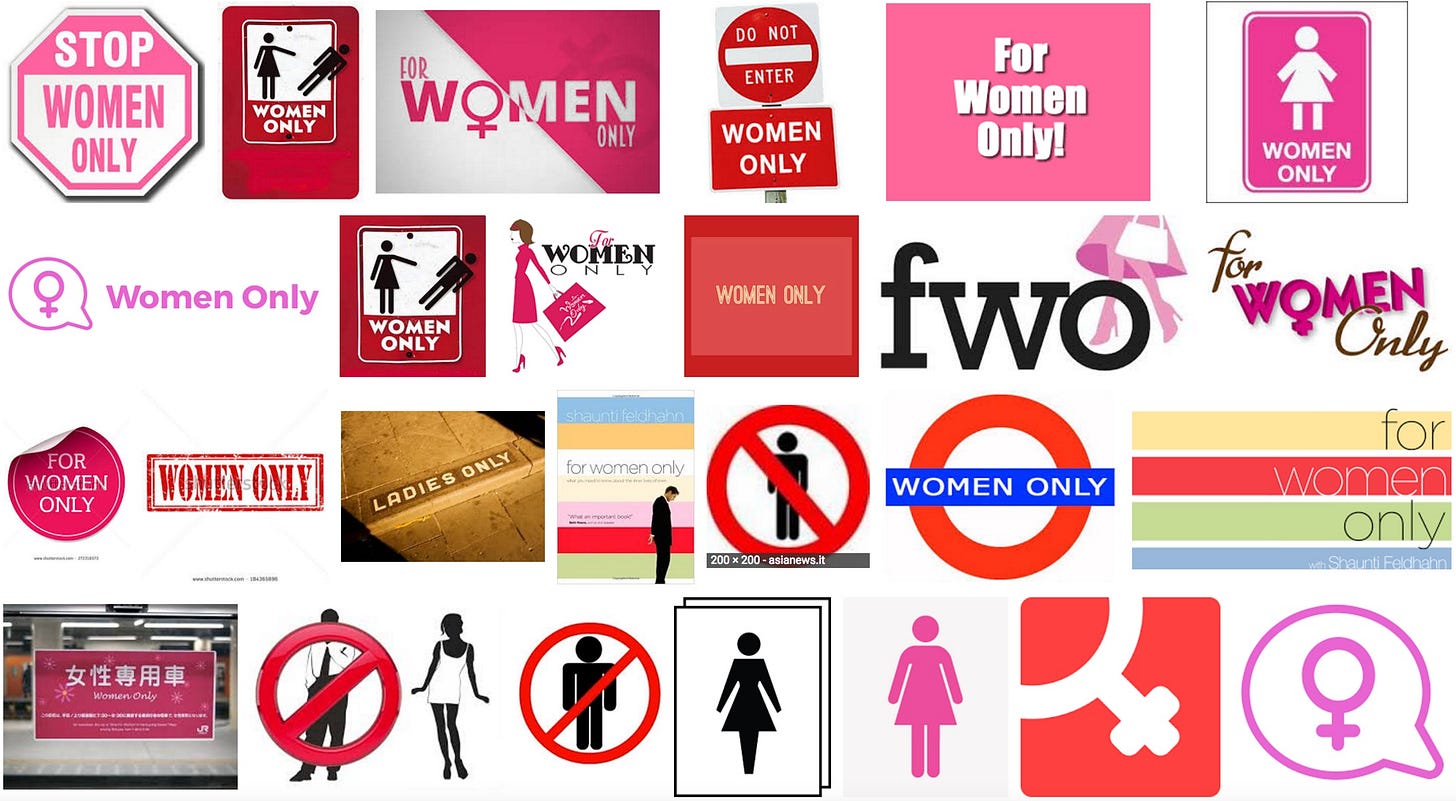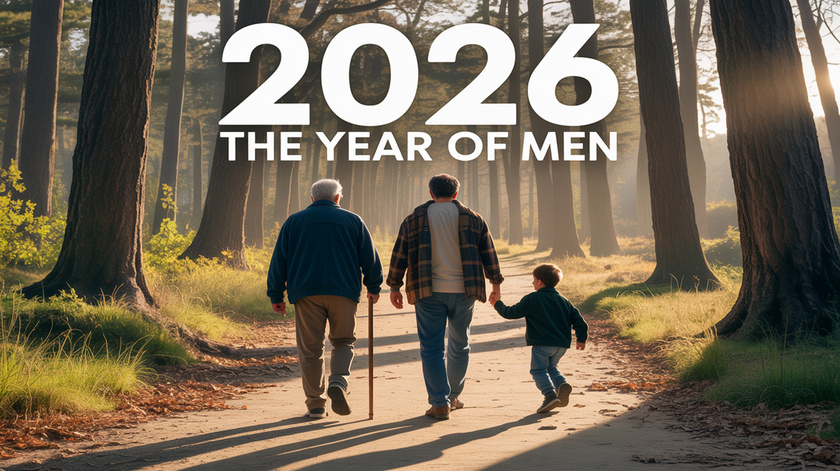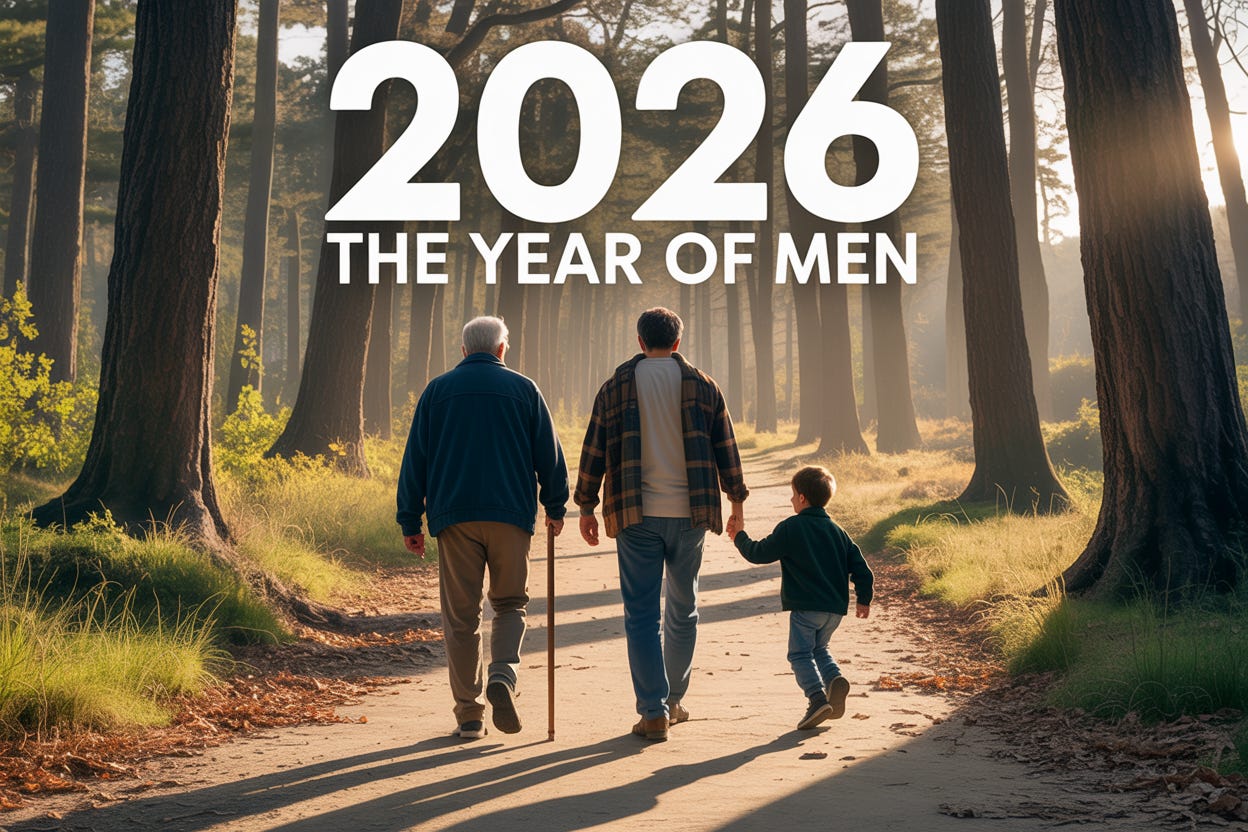I wrote this report when I was the vice-chair of the Maryland Commission for Men’s Health in 2008-2010. This was one of three reports that The Maryland Department of Health tried to deep six. It took us a year to track down what they had done and the reports finally made their way to the legislators. (The story of this event was a chapter in Janice Fiamengo’s excellent book Sons of Feminism: Men Have Their Say.) They really didn’t want this to get out and they succeeded since it was a year late. It was written with the idea of giving legislators a good sense of the bigoted path the domestic violence industry had taken in Maryland. It continues to be a good summary of how the feminists have built a lethal anti-male industry. It is amazing and shocking how little has changed since that time. Sad too.
The attached image was not a part of the original report. lol I couldn’t resist.😀
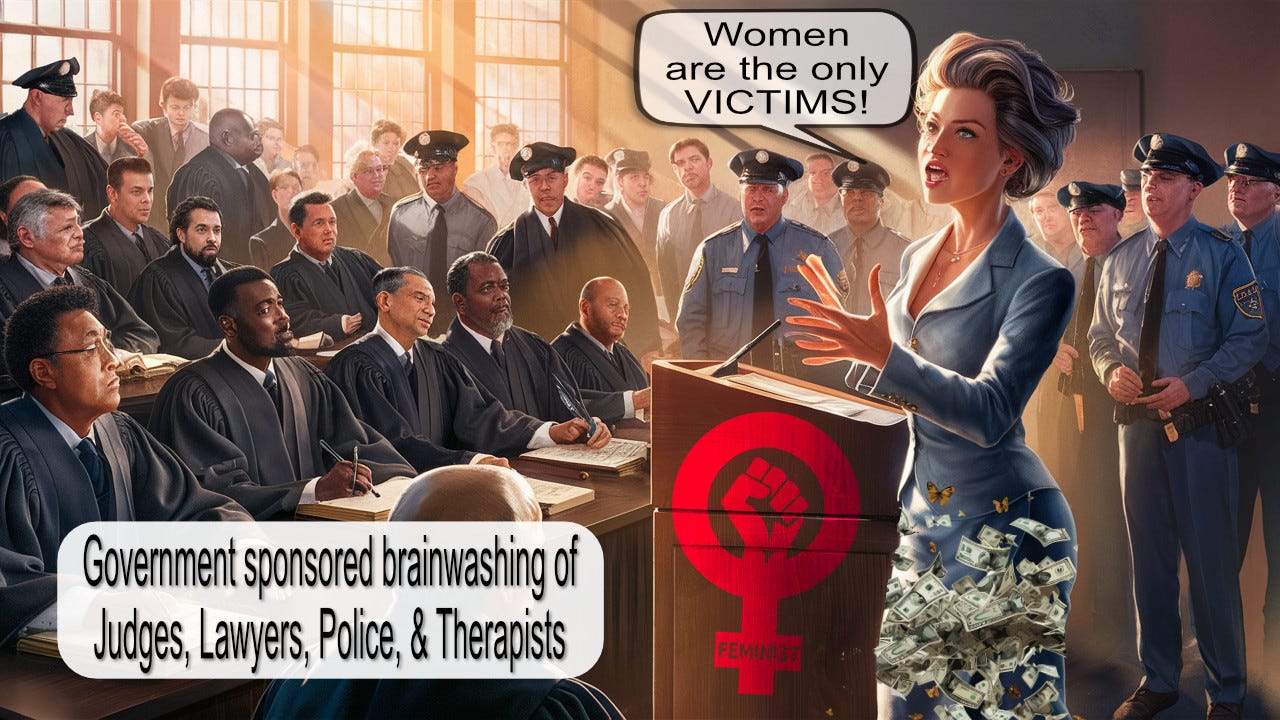
Perhaps the most confusing, perplexing, and controversial area in which men’s health needs are overlooked is the issue of male victims of domestic violence. One immediately noticeable trend is the strong tendency to focus solely on female victims and ignore male victims. This tendency is seen repeatedly. Most media, whether print or electronic, focuses on female victims of domestic violence and all too often fails to mention male victims. Almost every article in the newspaper and every program on TV about domestic violence focuses on female victims. We see the same focus in academia: courses in sociology and women’s studies repeat the message that women are the primary victims of domestic violence and rarely mention male victims. If you look on the internet at web sites of domestic violence agencies you will likely see a similar bias.1 One oft-quoted statistic is that according to a Department of Justice report, there are 1.5 million women each year in the United States who are victims of domestic violence. What you don’t see is that the same report also found that there are 834,000 male victims of domestic violence each year in the United States.2 Rather than adding the two and saying 2.3 million Americans suffer from domestic violence each year, all too often the only statistic highlighted is the one about women. One side of the story is told and the other side is ignored, as 834,000 men are omitted. Nationally, we have the “Violence Against Women Act” which boldly excludes men from its name. The National Council of Juvenile and Family Court Judges (a national group that teaches judges on the issue of domestic violence) offers a typical description which includes women but seems to minimize men: “Domestic violence puts millions of women and their families at risk each year and is one of the single greatest social ills impacting the nation.”3 There is no mention of men who might be at risk. Most organizations promote the idea that females are the overwhelming majority of victims of domestic violence. The general public has heard that message for decades and believes it to be the sole truth. But is it?
The National Council Against Domestic Violence (NCADV) offers a similar message that women are the vast majority of the victims of domestic violence. According to their definition of domestic violence: “There is not a typical woman who will be battered – the risk factor is being born female.”4 If “the” risk factor is being born female, that seems to exclude men from sharing the risk. But a look at their own statistics compiled from state governments tells a very different story. In the state of Maryland, according to NCADV statistics, men comprise 23% of the victims of domestic violence, and women are 23% of the perpetrators.5 Maryland State Police statistics reveal similar estimates, listing men as 25% of all victims of domestic violence.6 These numbers are confirmed and even exceeded when compared with peer-reviewed research. What you find is that men are a sizable portion of the victims of domestic violence, a much larger portion than is usually mentioned through a variety of sources. In fact, peer-reviewed research reveals that most domestic violence is characterized not by one person abusing the other, but by what is termed as “reciprocal” violence: a brawl between two partners.7 The bulk of the research also suggests that women are more often the initiators of the violence.8 This sharp contrast between the commonly-held public view of women as the vast majority of domestic violence victims with men as the sole perpetrators, versus the research and statistics compiled by authoritative sources, paint pictures that are hard to reconcile.
The domestic violence agencies in Maryland are obviously comprised of a compassionate group of people dedicated to fighting a horrible problem. The Maryland Commission for Men’s Health wholeheartedly agrees with them that domestic violence needs our attention and our resources. The issue that the commission finds worrisome is that it appears that only a part of the problem of domestic violence is being addressed in earnest: the female victims. The other parts are taking a back seat: male victims and female perpetrators. Due to this imbalance, some Marylanders go unserved and left in great pain.
There is a saying among NASA engineers that “an ounce of thrust at takeoff can mean thousands of miles down course.” The ounce of thrust that has thrown the domestic violence industry off course is the idea of holding men and masculinity solely responsible for the incidence of domestic violence. In its early years as a cause, many of those working in domestic violence assumed that men were the sole cause of domestic violence and, of course, women were seen as the only victims. It was this contention that has limited their vision to see the complexity of domestic violence and its many victims both male and female, heterosexual and homosexual. Over the years, various organizations and individuals have tried to offer feedback that males are in need of treatment as victims and females are in need of attention as perpetrators, but all too often their voices go noticably unheard.
How did things get to this point?
When domestic violence activism first started in the 1970’s, the leaders were mostly feminists who were rightly concerned about the lives and safety of women. What they saw was shocking: situations where muscular men were beating innocent women. Very quickly these stories started making their way to the media. People were shocked and outraged. The activists kept the stories flowing to the media and the media continued to alert the public to the truly awful horror stories. The feminist activists applied their ideological template to the issues of domestic violence. In the 1970’s, the feminist template presumed men were a major cause of women’s problems and were a large inhibiting factor holding women back from a variety of opportunities. Phrases like “all men are rapists” and “men are pigs” were commonplace. Men were routinely disdained and blamed. The horror of males committing domestic violence gave some reason to believe that these early misandrist stereotypes of men might hold some truth. Uncaring men, using their power to control and beat women, were observed repeatedly in these domestic violence situations, and this led to the assumption that it was men who were the underlying cause of a grievous social problem. Sadly, we now know that this idea of men being the underlying cause of the problem represents a truth but simply not the whole truth. What we now know is that although the stories of women being beaten by bullying men were certainly true, they told only part of the story. Researchers today characterize domestic violence as being 25% men beating women, 25% women beating men and 50% being more of a brawl between the two people.9 The brawling and the violent women had been overshadowed by the more shocking and outrageous examples of helpless women being beaten by bullying men.
This statistical breakdown of 25%-25%-50% is a shock to many and very difficult to believe. However, we have already seen how the premier national domestic violence organization, the National Coalition Against Domestic Violence (NCADV), verifies that in Maryland, for example, men comprise 23% of the victims and females 23% of the perpetrators of domestic violence. Why would people not believe this to be the case? Could it be that an ideology that holds men as the primary culprits in incidences of domestic violence continues to inhibit them from seeing situations in which men are victimized by abusive women?
The feminist idea that men are wholly responsible for domestic violence found immediate traction. The horrible situations that were being reported were all of abusive men terrorizing defenseless women. This sort of scenario struck a chord in both men and women who heard these reports. The women were moved due to their own compassion for other women and children who might be vulnerable and in need. The men were moved since an important part of the man’s biological and social sex role is to provide and protect for women and children. Seeing women abused by out-of-control men was a very strong call to action for most men. It is little wonder then that most states quickly developed laws and the beginnings of support for these female victims. By the 1980s, only a few short years from the early activism of the 1970s, many states had already put domestic violence laws on their books. That’s moving pretty fast, for legislative bodies, who are known for their tendency to be circumspect when introducing whole new classes of penal laws.
What prevented evidence of other forms of domestic violence from coming to the surface? One answer to this question comes from one of the original domestic violence activists, Ellen Pence. Pence was the author of an important book about domestic violence and the influential Duluth Model (discussed below). She was also the founder of the Duluth Domestic Abuse Intervention Project. Pence admits that there was an effort to avoid issues related to women’s violence and highlights the neglect of female abusers:
In many ways, we turned a blind eye to many women’s use of violence, their drug use and alcoholism, and their often harsh and violent treatment of their own children.10
Why would the original activists “turn a blind eye?” Did they not see that turning a blind eye put many innocent people in jeopardy? One of the reasons was surely that the theoretical framework of men being the “only abusers” left no room to see women as anything but victims. The norm for viewing female abusers came to be that a female abuser was considered to have been “abused in the past” and was acting this way out of hurt and self-defense, not evil or anything else. Their view of domestic violence simply did not allow room for the possibility of the woman as the abuser, plain and simple. As in all things, if your theoretical framework doesn’t account for a phenomenon to exist, it is much less likely to be recognized. It is also probably true that the media showed more interest in the stories where women were abused by men. These stories touched a cultural nerve and therefore sold more papers and air time. People wanted to read about female victims, but were not so interested in hearing about males who were abused by women. The early activists must have found that they could get the word out much more quickly and more powerfully by focusing on stories about men beating women.
The focus on male batterers and female victims has left us knowing a good deal less about female batterers. How could the less-physically powerful women ever batter or intimidate men? What we have since found out through research is that violent women make up for their lack of physical strength by using weapons and the tactic of surprise.11 In domestic violence situations, women will often use weapons when men are vulnerable. Think of Lorena Bobbitt who severed her husband’s penis while he slept or Mary Winkler who shot her husband in the back with a shotgun while he was sleeping, or Clara Harris who ran over her husband with her car as her daughter sat next to her. All are examples of women committing domestic violence by using the element of surprise paired with lethal weapons. Interestingly, none of these murders or incidents was ever portrayed by the media as domestic violence. The words “domestic violence” seem to be reserved exclusively for male-on-female violence only. When women do choose to be violent as in the above examples, muscles simply don’t matter. A shotgun will beat muscles every time. The national figures for the United States show that 30% of spousal murders, the most lethal form of domestic violence, are committed by women against their husbands or partners.12
It wasn’t just the domestic violence activists who intentionally ignored women’s violence. Our culture also tends to look the other way. For whatever reasons, a woman’s violence is simply not as upsetting to see. Just watch television shows or movies to see the frequency of women hitting or kicking men. In today’s world it is a given for women to hit men on TV but not the other way around. Everyone sees this but few seem to get upset or to protest. We are living with a huge double-standard where a woman’s violence against a man is something we see in cartoons, movies, commercials, or TV as innocuous or even comical. We see plenty of violence from men towards other men but when we see violence from men towards women it is seen as anything but comical or innocuous; it is seen as deadly. This double-standard likely increases the chances for women’s violence in relationships to be overlooked by the media, the general public and by domestic violence workers.
It is also likely true that once these activists were looking for funding for their endeavors from the government or private institutions, the stories about “vulnerable women in great need of safety” brought much more attention and promises of funding than did a similar story of a man being abused by his wife. Every politician wanted to be seen as the one helping solve this problem by “making women safe in their own homes”. Those stories about men as victims simply didn’t have the same traction. No politician wanted to touch those. For them, rather than help male victims in their lobbying for funds, the stories of abused men would likely muddy the waters and detract from the powerful images of women-in-need. The stories about men-in-need were also completely counter to the growing ideology that men were the source of all domestic violence. An abused man simply didn’t fit into that framework and would likely have decreased the success of any unisex funding efforts.
It is easy to see how the ideology of men as the source of the domestic violence problem likely developed over the initial years of domestic violence activism. It fit with the image that the media was helping to portray. It fit with the feminist idea that men were “the problem” and it surely helped in advocating for domestic violence funding. There were good reasons simply to not bring up men-as-victims.
The Duluth Model
In the early 1980s an important event transpired in the history of domestic violence prevention. A group of domestic violence activists met in Duluth, Minnesota after a particularly gruesome murder of a wife by a husband. The group started to put together what would eventually become the “Duluth Model”, which has since become a staple ideological protocol for most domestic violence agencies in the US. In some states, its use is mandated. In many ways it has become the handbook for those working with domestic violence victims and situations. It is important to understand the initial questions asked by the Duluth gathering at the inception of the Duluth Model theory. Here are questions asked by those at the initial gathering: “Why is she the target of his violence” “Why does he think he is entitled to have power?” “How does the community support his violence?”13 As you can see from the questions, the Duluth Model at its very beginnings was only about male violence towards women. It was never about mutual violence or a woman’s violence towards a man. It was only about men beating women. It had no remarks or suggestions for abused men or about female perpetrators. The flagship theory of the industry only focused on women as victims and men as perpetrators. Australian author Tom Graves has evaluated the Duluth Model and lists its major problems. Here are the first three:
1. It believes that violence is masculine and that men are responsible for violence
2. It refuses to remark or address the fact that men can be the recipients of violence
3. It holds only men responsible as change agents.14
These three errors play a huge part in the failure of the Duluth Model to address the needs of male victims and the needs of female perpetrators. Let’s hypothesize a possible example of the damage that can occur from stereotyping victims of domestic violence: Imagine both wife and husband have been drinking. The wife, in a burst of anger, throws a wine bottle at her husband who was hit on the arm as he blocked the bottle. The wife next comes after him with a wine glass and tries to throw wine in his face. He blocked that also and in the process, the wine glass breaks and cuts his wife. The police arrive. They find a bleeding and crying wife and a husband who claimed that he had been attacked. Their Duluth Model training has taught them that the vast majority of victims of domestic violence are female and so, what do they do? Arrest the man and put him in jail! No matter how much the man might try to explain his actions, the police would likely refuse to listen. In fact, once the wife realizes her husband was going to jail, she would probably start to tell the truth, that she was the attacker. The police would of course hear none of it and off to jail the man would go.
This man would be placed into a mandatory Duluth Model domestic violence “educational” group. He would not be allowed to speak the truth of what had happened. When he would try to explain that it was his wife who had attacked him, he would be told to be quiet and focus on his violence. The truth of his being abused would be seen by the group leaders as an “excuse” that keeps him from taking responsibility for his violence. He would be forced never to mention his wife’s violence. He would have two choices. One would be to tell the truth and not “graduate” from the educational sessions, which would leave him legally vulnerable. The other would be to lie and say he was the abuser. We could guess that this man would choose to lie simply in order to ”graduate” from the “training”.
This sort of example shows how the system can take on the role of what is being called a “third party” abuser. The spouse no longer has a need to batter. The police and community agencies are now taking over that role by treating the falsely-accused man in a manner that lacks respect for him as a human being who has been abused or as a citizen with the right to be presumed innocent or to have his side of a given unwitnessed incident fairly considererd. This is what can happen when pre-judgments arising from stereotypes are used instead of impartial mindsets coupled with factual analysis.
Since its inception, the Duluth Model has been reworked and made more “gender neutral”, but it continues to fail miserably in its capacity to address the needs of men who are victimized and of women who are violent.
If you visit the Duluth Model web site, you can see that their primary focus on female victims continues to this day. The Duluth site claims that women account for as many as 97% of the victims of domestic violence.15 We know from both police reports and from peer-reviewed research that this is far from the truth. It does however show that the Duluth Model continues to be focused on female victims and has failed in taking current thinking and research into account, thus placing male victims at risk and allowing female perpetrators to go unchecked or psychiatrically untreated for their abusiveness.
The Duluth Model spreads to the community
As the domestic violence industry grew, the Duluth Model took a greater and greater hold on the theoretical practices of domestic violence agencies. As it took this greater hold, the ideas of domestic violence being only about men beating women spread farther. As funding grew for domestic violence agencies, the funding for trainings grew correspondingly. The 1994 federal Violence Against Women Act started pouring about one billion dollars per year into domestic violence endeavors. A part of that money was spent on trainings given to the court systems, judges, police, lawyers and domestic violence workers. The message the workshops broadcast was founded on the Duluth Model ideology that women were the vast majority of domestic violence victims and men were only a tiny minority. More and more, the ideas of the Duluth Model became the standard. It was presented as fact that domestic violence is pretty much only about women being abused by men. That ideology is now set firmly in place. The early work of the activists has focused exclusively on abused women and now the theoretical framework that guided their work is firmly planted in an ideology that focuses on female victims but ignores the needs of male victims and the actions of female perpetrators. Now these ideas have been spread successfully into our community agencies and public institutions.
Opposing Voices to the Duluth Model — Researchers
Murray Straus, Richard Gelles, and Susan Steinmetz are early researchers on issues of domestic violence. This group published a book in 1982 that ran counter to the feminist ideology. The book, Behind Closed Doors,16 said clearly that domestic violence was a two-way street with both men and women responsible as perpetrators and victims. The response was swift and powerful. Upon publication, Straus, Gelles and Steinmetz were immediately seen as enemies. Prior to their findings that there is gender symmetry in domestic violence, they had been praised and held in high esteem as instrumental in the early research on domestic violence. But once they found data that contradicted the feminist belief that men were the only perpetrators and women the only victims, things changed drastically. At that point, they lost their glow and became villains to those who supported the ideas of women as the only victims of domestic violence. Death threats and other avenues of intimidation were used to try to silence them. Murray Straus, Ph.D., describes his struggle with intimidation and explains his own reluctance to publish his results that went counter to the feminist domestic violence ideology:
Researchers who have an ideological commitment to the idea that men are almost always the sole perpetrator often conceal evidence that contradicts this belief. Among researchers not committed to that ideology, many (including me and some of my colleagues) have withheld results showing gender symmetry to avoid becoming victims of the vitriolic denunciations and ostracism. Thus, many researchers have published only the data on male perpetrators or female victims, deliberately omitting the data on female perpetrators and male victims.17
In essence, these researchers were being bullied. In fact, Straus published a paper in 2006 that describes not only the intimidation they suffered but also chronicles the specific ways that the feminist researchers made certain that their own data only produced the desired results that reflected the ideology that women were the primary victims of domestic violence.18
The research by Straus, Gelles, Steinmetz, and many others which clearly shows that men are victims has been available through journal articles for years.19 Some activists have drawn from the statistics and findings and tried to use this information to change the system to encourage existing services to include focus on male victims of domestic violence. When activists make such attempts, they are usually met with the same results most every time: the domestic violence industry claims that the peer-reviewed research is inaccurate and cites numbers from their own clinical settings, hospital settings, and emergency rooms. The numbers they cite are very different from the research numbers and clearly show that domestic violence is indeed primarily a “men beat women” problem. So who is correct? The quick answer is BOTH. The research numbers from scientists such as Strauss, Gelles, and Steinmetz are correct from their perspective and from the populations they studied. These numbers were usually drawn from the general population and reflect the “average” person or family.
But how about the domestic violence agencies numbers? Well, they are correct also, but one must note that the sample they draw from is very biased. They draw from a population that has been utilizing services specifically built for women who were abused. It is little wonder that they would therefore be more likely to show greater numbers of female victims. Imagine a hospital that was built specifically for the treatment of caucasian diabetics. When they look at their own numbers and stats they would assuredly say that the majority of victims of diabetes are white! Since their services are built to serve whites, that is exactly what their stats will show. One would also assume that they would be teaching in the community about whites and diabetes and also do Public Service Announcements for whites who might have diabetes. The same thing happens within the domestic violence industry. The entire system was originally built for women. The name of the law the Violence Against Women Act makes that very clear. It is little wonder that the statistics they compile and the research done within the domestic violence industry on their own populations would reflect that women were the primary victims. You see this idea filter down to the clinical level where almost every group for domestic violence victims in Maryland is for women only. The treatment groups are almost always built for male perpetrators and female victims. The overwhelming majority of public service announcements on domestic violence are focused on female victims. When you solicit for a certain type of victim, it is no surprise that your statistics, trainings and treatment will center around that particular type of client.
Opposing Voices to the Duluth Model — Clinicians
While the peer-reviewed research has been noting male victims for years, the clinical side of the equation has now started getting noticed. In 2007, the American Psychiatric Association published an article in the August issue of Psychiatric News titled: “Men Shouldn’t be Overlooked as Victims of Partner Violence.”20 The article cited some of the research findings about women being more likely then men in relationship to initiate domestic violence and focused on issues of reciprocal interpersonal violence versus nonreciprocal violence. Here is a quote from the article:
Regarding perpetration of violence, more women than men (25 percent versus 11 percent) were responsible. In fact, 71 percent of the instigators in nonreciprocal partner violence were women.
And another:
As for physical injury due to intimate partner violence, it was more likely to occur when the violence was reciprocal than nonreciprocal. And while injury was more likely when violence was perpetrated by men, in relationships with reciprocal violence it was the men who were injured more often (25 percent of the time) than were women (20 percent of the time). “This is important as violence perpetrated by women is often seen as not serious,” Whitaker and his group stressed.
The word is getting out that both men and women are perpetrators and victims of domestic violence.
Opposing Voices to the Duluth Model — The Courts
The courts are also starting to take notice of the discrimination that men face in the domestic violence industry. In the Woods et. al. vs California case in 2008, a Superior Court in Sacramento, ruled that male domestic violence victims had been unconstitutionally denied services. The court held that state laws violated men’s equal protection rights by excluding male victims from state-funded domestic violence services. The court found: “domestic violence is a serious problem for both women and men” and that “men experience significant levels of domestic violence as victims.”21 The court also found a percentage of state-funded programs deny men services they are entitled to receive.
Then, in October 2009, a West Virginia judge struck down state rules for regulating domestic violence shelters because they operate “on the premise that only men can be batterers and only women can be victims” and “exclude adult and adolescent males from their statutory right to safety and security free from domestic violence based only on their gender.”22
Are there men who fall through the cracks?
We have seen how the domestic violence industry has had a history of blaming men and masculinity for domestic violence. This sort of theoretical assumption has a negative impact on the willingness of men to seek help. The men, not unlike the early female victims of domestic violence in the 1970’s who were very reluctant to seek treatment, are certain that no one cares about their situation and are highly unlikely to seek out services when not invited. What compounds this problem for men is that their gender is blamed for the original problem.
We have learned from Maryland State Police statistics that men comprise about 25% of the victims of domestic violence in Maryland.23 What we don’t know is the percentage of males seeking treatment as victims of domestic violence. In checking with a number of Maryland Domestic Violence agencies, they often say that the number of male victims is very small. Some of the treatment centers claim that men are only 4% of their clients. If the State Police count men as 25% of the 20,000 victims of domestic violence recorded annually in Maryland and the agencies that offer treatment for domestic violence say that men are only 4% of the victims that request treatment, that seems to leave a huge number of men who are untreated victims. It seems likely that a large percentage of the 5000+ men who are reported by State Police as victims of domestic violence in Maryland are falling through the cracks and not getting the help they need and are entitled to as citizens and residents.
What once started as a righteous cause to help battered women has evolved over the years to be something that seems to help battered women but also seems to neglect the needs of violent women and battered men and ignores the imperatives that the fundamental demands our tradition of justice holds dear. Both the media and academia seem to focus solely on female victims of domestic violence, with a much smaller focus or none at all on male victims. Researchers doing peer-reviewed research have consistently found evidence that men and women are both victims of domestic violence, but this finding has not been translated to changing the treatment that men receive in domestic violence agencies. Clinical groups such as the American Psychiatric Association are beginning to alert the public and clinicians that men are indeed a sizable percentage of domestic violence victims. The courts have also started pointing out the discrimination that is present in many domestic violence agencies that treat men and women differently.
This report is not claiming that men are never served through domestic violence agencies in the state of Maryland. It is however claiming that Maryland’s domestic violence services have traditionally been created for women only and this has a chilling effect on men’s usage of these facilities.
A Proposal For Practical Change
There is a domestic violence group named “Safe For All” that offers trainings nationwide and is particularly aware of the many issues around domestic violence, including those of male victims and of people in homosexual relationships, also an under-recognized and under-served group. Their web address is http://safe4all.org/24 The National Family Law Legislative Resource Center, www.nfvlrc.org25 represents the nation’s leading authorties, clinicians, and researchers on domestic violence and could also offer trainings and consultations.26
Although calls to Maryland shelters and crisis lines to test for discriminatory handling of reports have at the present time not been conducted, there is no question such testing can be conducted and most likely will be conducted in order to support lawsuits similar to the successful ones used in the legal cases in California and West Virginia cited above. The results of such testing in Maryland would likely mirror these results: In a national poll by Clark University, female researchers studied 302 abused men who sought help. Their key findings were that 63.9% of men who called hotlines were told they only helped women, and 68.7% said the hotlines were not at all helpful. Of those that contacted a local domestic violence (shelter) program, 95.3% said the program gave the impression that they were biased against men, 78.3% said they don’t help male victims, and 63.9% suggested the male caller was the batterer. (See; http://clarku.edu/faculty/dhines/results.htm.27 )
Therefore, in order to avoid costly and time-consuming lawsuits, it behooves the State of Maryland to require all domestic violence service organizations that receive pass-through federal funding or state funding of any type to receive training in non-discriminatory but practical approaches and techniques for handling domestic violence cases and suspected or reported cases. Such training is available via the two organizations referenced above, and also from others.
Whether or not gay and heterosexual men represent a small minority, a large minority, or an equal number of such victims as compared to women in the population is immaterial. The State of Maryland by its policies and procedures is obligated to encourage and support only those organizations that practice inclusion, diversity and non-discrimination. However, not even very large urban areas can financially support “separate but equal” domestic violence facilities and services for men and women. Not only is it not practical, but such a policy does little to combat discrimination and only encourages conflict over funding resources. 1. The purpose of this training is to provide guidance and directives in how to implement a non-discrimination policy in all service areas. 2. As part of this training program, a compliance coordination methodology shall be developed to assure that the non-discrimination policy is being carried out by agencies who participated in the training. 3. The training will provide cost-effective, implementable, and practical steps that each agency or organization can take to eliminate discrimination and incorporate gender and sexual orientation inclusive policies.
We respectfully request the Office of The Governor to immediately begin the implementation of such a training program.
REFERENCES
1 One example is the Allstate page <http://www.clicktoempower.org/> linked from the Maryland Network Against Domestic Violence (MNADV) web page that rightly claims that 3 women each day (actually it is closer to 4) die of domestic violence in the United States. They fail to mention that nearly 2 men die each day due to being murdered by their female partner. This is a glaring omission. In 2007 1640 women were murdered by their male intimates and 700 men were murdered by their female partners. http://bjs.ojp.usdoj.gov/index.cfm?ty=tp&tid=971 Why are the male victims omitted?
2 “Prevalence, Incidence, and Consequences of Violence Against Women: Findings From the National Violence Against Women Survey | National Institute of Justice.” Office of Justice Programs. N.p., n.d. Web. 20 Dec. 2009. <http://www.ojp.usdoj.gov/nij/pubs-sum/172837.htm>.
3 “Family Violence.” National Council of Juvenile and Family Court Judges . N.p., n.d. Web. 18 Dec. 2009. <www.ncjfcj.org/content/view/20/94/>.
4 “National Coalition Against Domestic Violence.” National Coalition Against Domestic Violence. N.p., n.d. Web. 20 Dec. 2009. <http://www.ncadv.org/learn/TheProblem.php>.
5 “Domestic Violence Facts: Maryland.” National Coalition Against Domestic Violence. N.p., n.d. Web. 18 Dec. 2009. <www.ncadv.org/files/Maryland.pdf>.
6 “Maryland Network Against Domestic Violence (MNADV).” Maryland Network Against Domestic Violence (MNADV). N.p., n.d. Web. 20 Dec. 2009. <http://mnadv.org/DV_Stats/ucr_stats.html>.
7 Whitaker, Daniel. “Differences in Frequency of Violence and Reported Injury Between Relationships With Reciprocal and Nonreciprocal Intimate Partner Violence.” Journal of Public Health 97.May (2007): 941-947. Print.
8 Ibid.
9 Ibid.
10 Pence E. Some thoughts on philosophy. In Shepard M and Pence E (eds.): Coordinating Community Responses to Domestic Violence: Lessons from Duluth and Beyond. Thousand Oaks, CA: Sage Publishers, 1999, p. 30.
11 McNeely, R. L., Cook, P. W. & Torres, J. B. (2001). Is domestic violence a gender issue or a human issue? Journal of Human Behavior in the Social Environment, 4 (4), 227-251.
12 “Bureau of Justice Statistics (BJS) – Intimate partner violence.” Bureau of Justice Statistics (BJS) . N.p., n.d. Web. 12 Jan. 2010. <http://bjs.ojp.usdoj.gov/index.cfm?ty=tp&tid=971>.
13 Paymar, Michael, and Ellen Pence. Education Groups for Men Who Batter: The Duluth Model. 1 ed. New York: Springer Publishing Company, 1993. Print.
14 Graves, Tom. Power and Response-ability: the human side of systems. London: Tetradian, 2008. Print.
15 Domestic Abuse Intervention Programs, Home of the Duluth Model.” Domestic Abuse Intervention Programs, Home of the Duluth Model. N.p., n.d. Web. 20 Dec. 2009. <http://www.theduluthmodel.org/wheelgallery.php>.
16 Gelles, Richard J., and Murray Straus. Behind Closed Doors: Violence in the American Family. New Ed ed. New Brunswick: Transaction Publishers, 2006. Print.
17 “Processes Explaining the Concealment and Distortion of Evidence on Gender Symetry in Partner Violence.” University of New Hampshire. N.p., n.d. Web.18 Dec. 2009. <pubpages.unh.edu/~mas2/V74-gender-symmetry-with-gramham-Kevan-Method%208-.pdf>.
18 Ibid.
19 “REFERENCES EXAMINING ASSAULTS BY WOMEN ON THEIR SPOUSES OR MALE PARTNERS: AN ANNOTATED BIBLIOGRAPHY.” California State University, Long Beach. N.p., n.d. Web. 20 Dec. 2009. <http://www.csulb.edu/~mfiebert/assault.htm>.
20 Arehart-Treichel, Joan. “Men Shouldn’t Be Overlooked as Victims of Partner Violence.” APA Psychiatric News 42.15 (2007): 31-33. Print.
21 “Appeals court decision supports battered men.” San Francisco Bay Area — News, Sports, Business, Entertainment, Classifieds: SFGate. N.p., n.d. Web. 20 Dec. 2009. <http://www.sfgate.com/cgi-bin/article.cgi?f=/c/a/2008/10/15/BA3S13HOLS.DTL>.
22 Press, The Associated. “W.Va. domestic-violence program regulations voided – News – The Charleston Gazette – West Virginia News and Sports.” – – The Charleston Gazette – West Virginia News and Sports. N.p., n.d. Web. 20 Dec. 2009. <http://www.wvgazette.com/News/200910080509>.
23 “Maryland Network Against Domestic Violence (MNADV).” Maryland Network Against Domestic Violence (MNADV). N.p., n.d. Web. 18 Dec. 2009. <http://www.mnadv.org/DV_Stats/ucr_stats.html>.
24 “Welcome!.” Stop Abuse for Everyone. N.p., n.d. Web. 18 Dec. 2009. <safe4all.org>.
25 Robinson, Michael. “National Family Violence Legislative Resource Center.” National Family Violence Legislative Resource Center. N.p., n.d. Web. 15 Jan. 2010. <http://www.nfvlrc.org/>.
26 Please consult with the Chairman or Vice-Chairman of the Maryland Commission for Men’s Health for more information on these organizations.
27 “Results from Study on Men’s Experiences of Partner Aggression.” Clark University | One of 40 “Colleges that Change Lives”. N.p., n.d. Web. 15 Jan. 2010. <http://clarku.edu/faculty/dhines/results.htm>.

